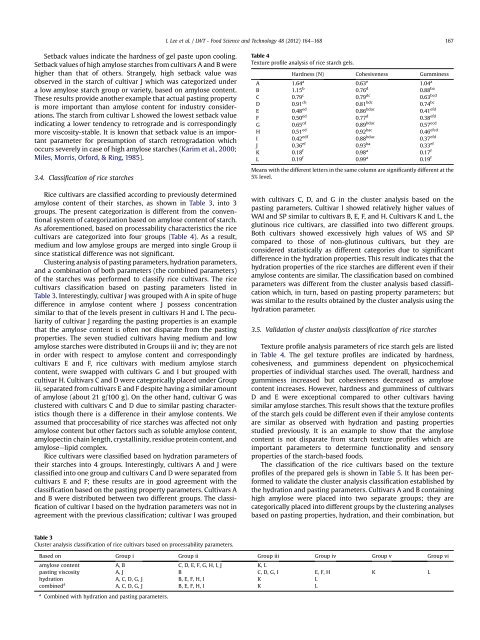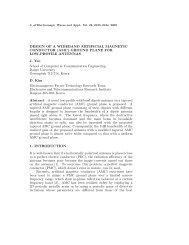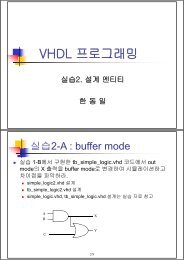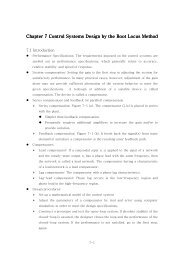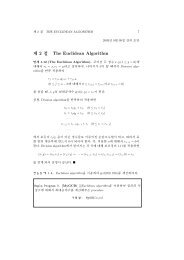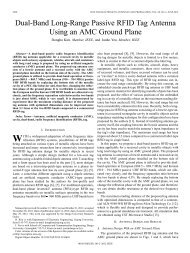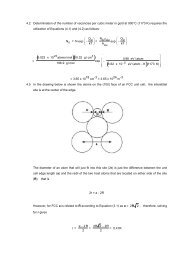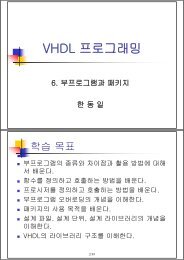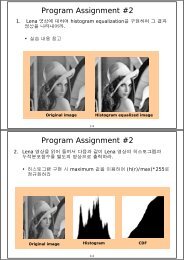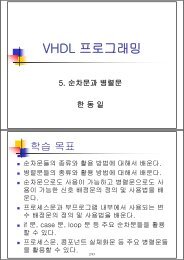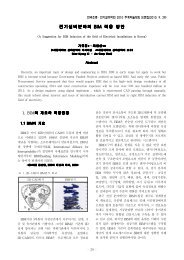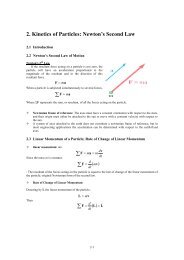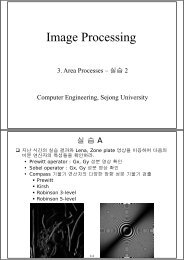Classification of rice cultivars based on cluster analysis of hydration ...
Classification of rice cultivars based on cluster analysis of hydration ...
Classification of rice cultivars based on cluster analysis of hydration ...
You also want an ePaper? Increase the reach of your titles
YUMPU automatically turns print PDFs into web optimized ePapers that Google loves.
Setback values indicate the hardness <str<strong>on</strong>g>of</str<strong>on</strong>g> gel paste up<strong>on</strong> cooling.<br />
Setback values <str<strong>on</strong>g>of</str<strong>on</strong>g> high amylose starches from <str<strong>on</strong>g>cultivars</str<strong>on</strong>g> A and B were<br />
higher than that <str<strong>on</strong>g>of</str<strong>on</strong>g> others. Strangely, high setback value was<br />
observed in the starch <str<strong>on</strong>g>of</str<strong>on</strong>g> cultivar J which was categorized under<br />
a low amylose starch group or variety, <str<strong>on</strong>g>based</str<strong>on</strong>g> <strong>on</strong> amylose c<strong>on</strong>tent.<br />
These results provide another example that actual pasting property<br />
is more important than amylose c<strong>on</strong>tent for industry c<strong>on</strong>siderati<strong>on</strong>s.<br />
The starch from cultivar L showed the lowest setback value<br />
indicating a lower tendency to retrograde and is corresp<strong>on</strong>dingly<br />
more viscosity-stable. It is known that setback value is an important<br />
parameter for presumpti<strong>on</strong> <str<strong>on</strong>g>of</str<strong>on</strong>g> starch retrogradati<strong>on</strong> which<br />
occurs severely in case <str<strong>on</strong>g>of</str<strong>on</strong>g> high amylose starches (Karim et al., 2000;<br />
Miles, Morris, Orford, & Ring, 1985).<br />
3.4. <str<strong>on</strong>g>Classificati<strong>on</strong></str<strong>on</strong>g> <str<strong>on</strong>g>of</str<strong>on</strong>g> <str<strong>on</strong>g>rice</str<strong>on</strong>g> starches<br />
Rice <str<strong>on</strong>g>cultivars</str<strong>on</strong>g> are classified according to previously determined<br />
amylose c<strong>on</strong>tent <str<strong>on</strong>g>of</str<strong>on</strong>g> their starches, as shown in Table 3, into 3<br />
groups. The present categorizati<strong>on</strong> is different from the c<strong>on</strong>venti<strong>on</strong>al<br />
system <str<strong>on</strong>g>of</str<strong>on</strong>g> categorizati<strong>on</strong> <str<strong>on</strong>g>based</str<strong>on</strong>g> <strong>on</strong> amylose c<strong>on</strong>tent <str<strong>on</strong>g>of</str<strong>on</strong>g> starch.<br />
As aforementi<strong>on</strong>ed, <str<strong>on</strong>g>based</str<strong>on</strong>g> <strong>on</strong> processability characteristics the <str<strong>on</strong>g>rice</str<strong>on</strong>g><br />
<str<strong>on</strong>g>cultivars</str<strong>on</strong>g> are categorized into four groups (Table 4). As a result,<br />
medium and low amylose groups are merged into single Group ii<br />
since statistical difference was not significant.<br />
Clustering <strong>analysis</strong> <str<strong>on</strong>g>of</str<strong>on</strong>g> pasting parameters, hydrati<strong>on</strong> parameters,<br />
and a combinati<strong>on</strong> <str<strong>on</strong>g>of</str<strong>on</strong>g> both parameters (the combined parameters)<br />
<str<strong>on</strong>g>of</str<strong>on</strong>g> the starches was performed to classify <str<strong>on</strong>g>rice</str<strong>on</strong>g> <str<strong>on</strong>g>cultivars</str<strong>on</strong>g>. The <str<strong>on</strong>g>rice</str<strong>on</strong>g><br />
<str<strong>on</strong>g>cultivars</str<strong>on</strong>g> classificati<strong>on</strong> <str<strong>on</strong>g>based</str<strong>on</strong>g> <strong>on</strong> pasting parameters listed in<br />
Table 3. Interestingly, cultivar J was grouped with A in spite <str<strong>on</strong>g>of</str<strong>on</strong>g> huge<br />
difference in amylose c<strong>on</strong>tent where J possess c<strong>on</strong>centrati<strong>on</strong><br />
similar to that <str<strong>on</strong>g>of</str<strong>on</strong>g> the levels present in <str<strong>on</strong>g>cultivars</str<strong>on</strong>g> H and I. The peculiarity<br />
<str<strong>on</strong>g>of</str<strong>on</strong>g> cultivar J regarding the pasting properties is an example<br />
that the amylose c<strong>on</strong>tent is <str<strong>on</strong>g>of</str<strong>on</strong>g>ten not disparate from the pasting<br />
properties. The seven studied <str<strong>on</strong>g>cultivars</str<strong>on</strong>g> having medium and low<br />
amylose starches were distributed in Groups iii and iv; they are not<br />
in order with respect to amylose c<strong>on</strong>tent and corresp<strong>on</strong>dingly<br />
<str<strong>on</strong>g>cultivars</str<strong>on</strong>g> E and F, <str<strong>on</strong>g>rice</str<strong>on</strong>g> <str<strong>on</strong>g>cultivars</str<strong>on</strong>g> with medium amylose starch<br />
c<strong>on</strong>tent, were swapped with <str<strong>on</strong>g>cultivars</str<strong>on</strong>g> G and I but grouped with<br />
cultivar H. Cultivars C and D were categorically placed under Group<br />
iii, separated from <str<strong>on</strong>g>cultivars</str<strong>on</strong>g> E and F despite having a similar amount<br />
<str<strong>on</strong>g>of</str<strong>on</strong>g> amylose (about 21 g/100 g). On the other hand, cultivar G was<br />
<strong>cluster</strong>ed with <str<strong>on</strong>g>cultivars</str<strong>on</strong>g> C and D due to similar pasting characteristics<br />
though there is a difference in their amylose c<strong>on</strong>tents. We<br />
assumed that proccesability <str<strong>on</strong>g>of</str<strong>on</strong>g> <str<strong>on</strong>g>rice</str<strong>on</strong>g> starches was affected not <strong>on</strong>ly<br />
amylose c<strong>on</strong>tent but other factors such as soluble amylose c<strong>on</strong>tent,<br />
amylopectin chain length, crystallinity, residue protein c<strong>on</strong>tent, and<br />
amyloseelipid complex.<br />
Rice <str<strong>on</strong>g>cultivars</str<strong>on</strong>g> were classified <str<strong>on</strong>g>based</str<strong>on</strong>g> <strong>on</strong> hydrati<strong>on</strong> parameters <str<strong>on</strong>g>of</str<strong>on</strong>g><br />
their starches into 4 groups. Interestingly, <str<strong>on</strong>g>cultivars</str<strong>on</strong>g> A and J were<br />
classified into <strong>on</strong>e group and <str<strong>on</strong>g>cultivars</str<strong>on</strong>g> C and D were separated from<br />
<str<strong>on</strong>g>cultivars</str<strong>on</strong>g> E and F; these results are in good agreement with the<br />
classificati<strong>on</strong> <str<strong>on</strong>g>based</str<strong>on</strong>g> <strong>on</strong> the pasting property parameters. Cultivars A<br />
and B were distributed between two different groups. The classificati<strong>on</strong><br />
<str<strong>on</strong>g>of</str<strong>on</strong>g> cultivar I <str<strong>on</strong>g>based</str<strong>on</strong>g> <strong>on</strong> the hydrati<strong>on</strong> parameters was not in<br />
agreement with the previous classificati<strong>on</strong>; cultivar I was grouped<br />
Table 3<br />
Cluster <strong>analysis</strong> classificati<strong>on</strong> <str<strong>on</strong>g>of</str<strong>on</strong>g> <str<strong>on</strong>g>rice</str<strong>on</strong>g> <str<strong>on</strong>g>cultivars</str<strong>on</strong>g> <str<strong>on</strong>g>based</str<strong>on</strong>g> <strong>on</strong> processability parameters.<br />
with <str<strong>on</strong>g>cultivars</str<strong>on</strong>g> C, D, and G in the <strong>cluster</strong> <strong>analysis</strong> <str<strong>on</strong>g>based</str<strong>on</strong>g> <strong>on</strong> the<br />
pasting parameters. Cultivar I showed relatively higher values <str<strong>on</strong>g>of</str<strong>on</strong>g><br />
WAI and SP similar to <str<strong>on</strong>g>cultivars</str<strong>on</strong>g> B, E, F, and H. Cultivars K and L, the<br />
glutinous <str<strong>on</strong>g>rice</str<strong>on</strong>g> <str<strong>on</strong>g>cultivars</str<strong>on</strong>g>, are classified into two different groups.<br />
Both <str<strong>on</strong>g>cultivars</str<strong>on</strong>g> showed excessively high values <str<strong>on</strong>g>of</str<strong>on</strong>g> WS and SP<br />
compared to those <str<strong>on</strong>g>of</str<strong>on</strong>g> n<strong>on</strong>-glutinous <str<strong>on</strong>g>cultivars</str<strong>on</strong>g>, but they are<br />
c<strong>on</strong>sidered statistically as different categories due to significant<br />
difference in the hydrati<strong>on</strong> properties. This result indicates that the<br />
hydrati<strong>on</strong> properties <str<strong>on</strong>g>of</str<strong>on</strong>g> the <str<strong>on</strong>g>rice</str<strong>on</strong>g> starches are different even if their<br />
amylose c<strong>on</strong>tents are similar. The classificati<strong>on</strong> <str<strong>on</strong>g>based</str<strong>on</strong>g> <strong>on</strong> combined<br />
parameters was different from the <strong>cluster</strong> <strong>analysis</strong> <str<strong>on</strong>g>based</str<strong>on</strong>g> classificati<strong>on</strong><br />
which, in turn, <str<strong>on</strong>g>based</str<strong>on</strong>g> <strong>on</strong> pasting property parameters; but<br />
was similar to the results obtained by the <strong>cluster</strong> <strong>analysis</strong> using the<br />
hydrati<strong>on</strong> parameter.<br />
3.5. Validati<strong>on</strong> <str<strong>on</strong>g>of</str<strong>on</strong>g> <strong>cluster</strong> <strong>analysis</strong> classificati<strong>on</strong> <str<strong>on</strong>g>of</str<strong>on</strong>g> <str<strong>on</strong>g>rice</str<strong>on</strong>g> starches<br />
Texture pr<str<strong>on</strong>g>of</str<strong>on</strong>g>ile <strong>analysis</strong> parameters <str<strong>on</strong>g>of</str<strong>on</strong>g> <str<strong>on</strong>g>rice</str<strong>on</strong>g> starch gels are listed<br />
in Table 4. The gel texture pr<str<strong>on</strong>g>of</str<strong>on</strong>g>iles are indicated by hardness,<br />
cohesiveness, and gumminess dependent <strong>on</strong> physicochemical<br />
properties <str<strong>on</strong>g>of</str<strong>on</strong>g> individual starches used. The overall, hardness and<br />
gumminess increased but cohesiveness decreased as amylose<br />
c<strong>on</strong>tent increases. However, hardness and gumminess <str<strong>on</strong>g>of</str<strong>on</strong>g> <str<strong>on</strong>g>cultivars</str<strong>on</strong>g><br />
D and E were excepti<strong>on</strong>al compared to other <str<strong>on</strong>g>cultivars</str<strong>on</strong>g> having<br />
similar amylose starches. This result shows that the texture pr<str<strong>on</strong>g>of</str<strong>on</strong>g>iles<br />
<str<strong>on</strong>g>of</str<strong>on</strong>g> the starch gels could be different even if their amylose c<strong>on</strong>tents<br />
are similar as observed with hydrati<strong>on</strong> and pasting properties<br />
studied previously. It is an example to show that the amylose<br />
c<strong>on</strong>tent is not disparate from starch texture pr<str<strong>on</strong>g>of</str<strong>on</strong>g>iles which are<br />
important parameters to determine functi<strong>on</strong>ality and sensory<br />
properties <str<strong>on</strong>g>of</str<strong>on</strong>g> the starch-<str<strong>on</strong>g>based</str<strong>on</strong>g> foods.<br />
The classificati<strong>on</strong> <str<strong>on</strong>g>of</str<strong>on</strong>g> the <str<strong>on</strong>g>rice</str<strong>on</strong>g> <str<strong>on</strong>g>cultivars</str<strong>on</strong>g> <str<strong>on</strong>g>based</str<strong>on</strong>g> <strong>on</strong> the texture<br />
pr<str<strong>on</strong>g>of</str<strong>on</strong>g>iles <str<strong>on</strong>g>of</str<strong>on</strong>g> the prepared gels is shown in Table 5. It has been performed<br />
to validate the <strong>cluster</strong> <strong>analysis</strong> classificati<strong>on</strong> established by<br />
the hydrati<strong>on</strong> and pasting parameters. Cultivars A and B c<strong>on</strong>taining<br />
high amylose were placed into two separate groups; they are<br />
categorically placed into different groups by the <strong>cluster</strong>ing analyses<br />
<str<strong>on</strong>g>based</str<strong>on</strong>g> <strong>on</strong> pasting properties, hydrati<strong>on</strong>, and their combinati<strong>on</strong>, but<br />
Based <strong>on</strong> Group i Group ii Group iii Group iv Group v Group vi<br />
amylose c<strong>on</strong>tent A, B C, D, E, F, G, H, I, J K, L<br />
pasting viscosity A, J B C, D, G, I E, F, H K L<br />
hydrati<strong>on</strong> A, C, D, G, J B, E, F, H, I K L<br />
combined a<br />
A, C, D, G, J B, E, F, H, I K L<br />
a Combined with hydrati<strong>on</strong> and pasting parameters.<br />
I. Lee et al. / LWT - Food Science and Technology 48 (2012) 164e168 167<br />
Table 4<br />
Texture pr<str<strong>on</strong>g>of</str<strong>on</strong>g>ile <strong>analysis</strong> <str<strong>on</strong>g>of</str<strong>on</strong>g> <str<strong>on</strong>g>rice</str<strong>on</strong>g> starch gels.<br />
Hardness (N) Cohesiveness Gumminess<br />
A 1.64 a<br />
0.63 e<br />
1.04 a<br />
B 1.15 b<br />
0.76 d<br />
0.88 ba<br />
C 0.79 c<br />
0.79 dc<br />
0.63 bcd<br />
D 0.91 cb<br />
0.81 bdc<br />
0.74 bc<br />
E 0.48 ed<br />
0.86 bdac<br />
0.41 efd<br />
F 0.50 ed<br />
0.77 d<br />
0.38 efd<br />
G 0.65 cd<br />
0.89 bdac<br />
0.57 ecd<br />
H 0.51 ed<br />
0.92 bac<br />
0.46 efcd<br />
I 0.42 edf<br />
0.88 bdac<br />
0.37 efd<br />
J 0.36 ef<br />
0.93 ba<br />
0.33 ef<br />
K 0.18 f<br />
0.98 a<br />
0.17 f<br />
L 0.19 f<br />
0.99 a<br />
0.19 f<br />
Means with the different letters in the same column are significantly different at the<br />
5% level.


